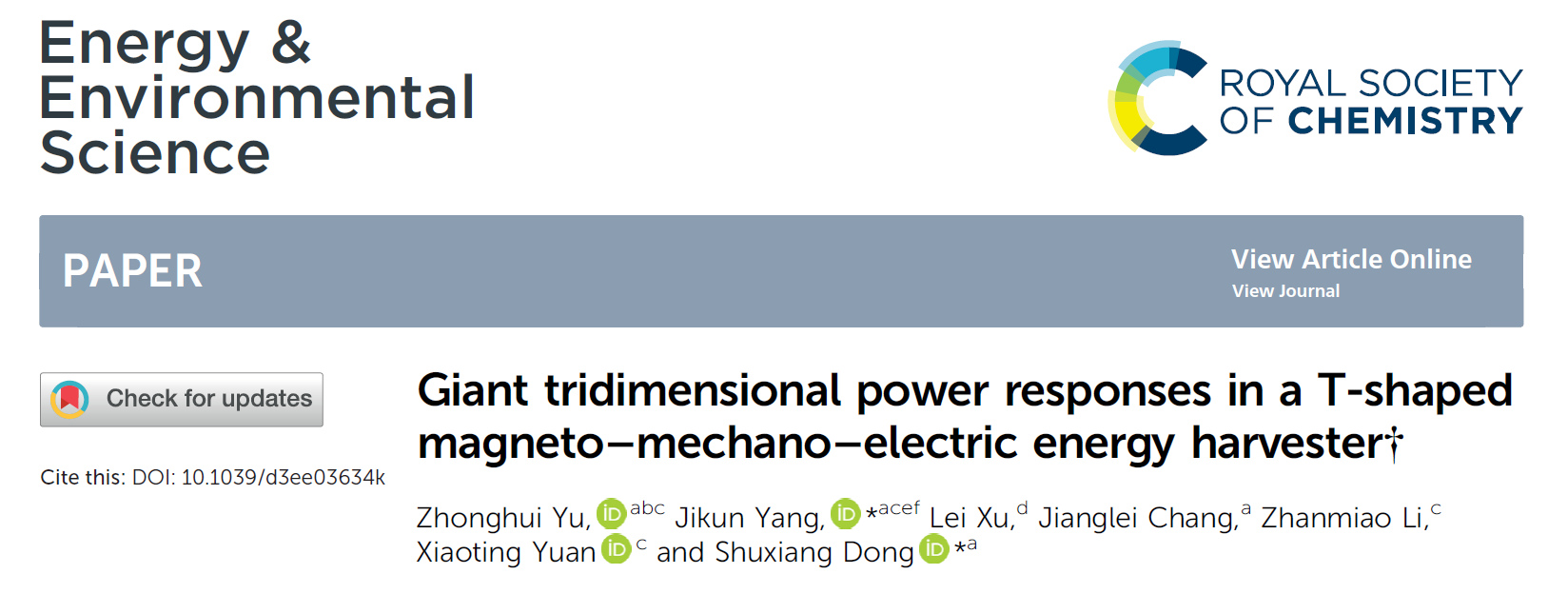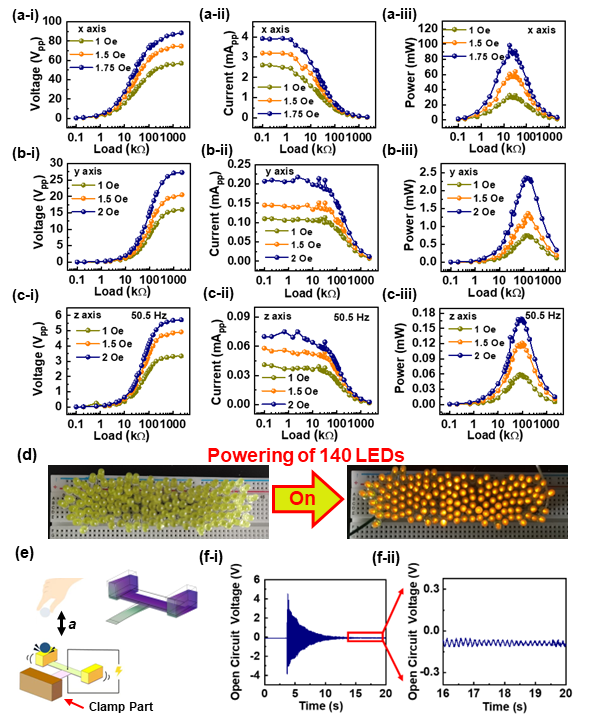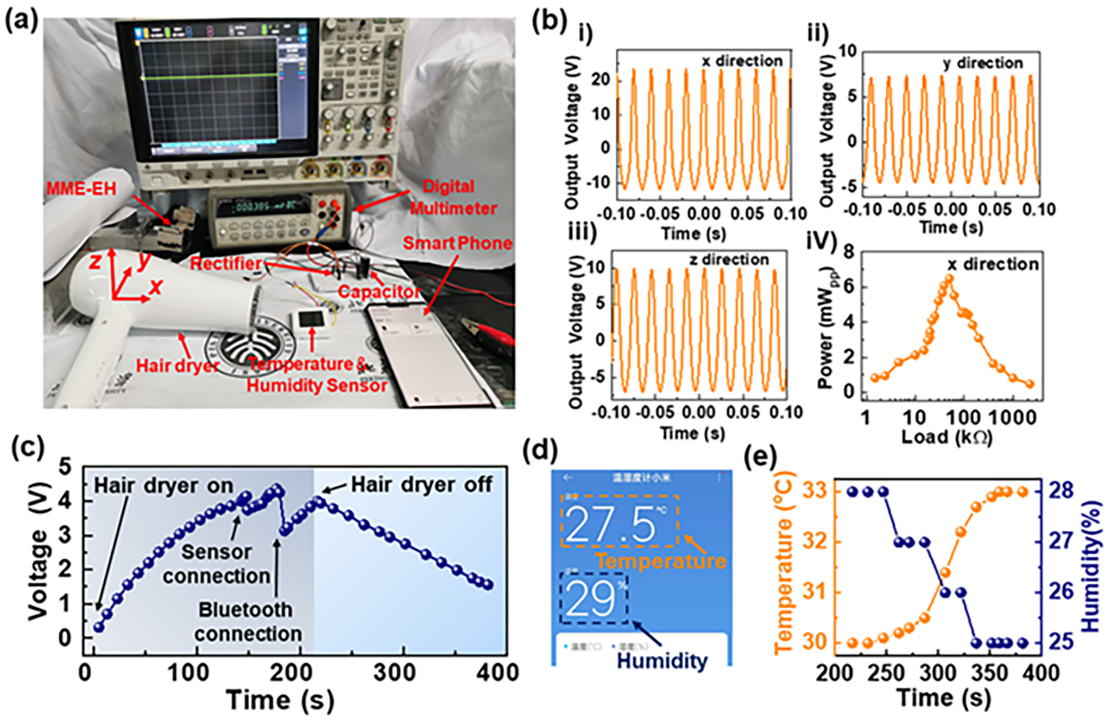The rapid development of information technology has led to more in-depth research on Internet of Things (IoTs) technology. Sensor networks (WSNs) composed of massive low-power electronic components are an important part of smart cities that realize the interconnection of humans, machines, and things. Converting various renewable and clean micro-energy sources such as magnetic field energy and mechanical vibration energy widely and randomly distributed in the environment into electrical energy for the operation of electronic sensing devices will pave the way for truly distributed intelligent sensing. There is full of time-varying complex electromagnetic field environments from modern power grids in the real life. Magneto-mechano-electric energy harvesters based on the magnetic torque effect and piezoelectric effect can capture the magnetic field energy and vibration energy in the environment at the same time, and become a hot topic in micro-energy devices. However, once fixed, traditional cantilever beams and other structures can only sense and collect magnetic field energy in specific directions, making it difficult to maximize and effectively capture three-dimensional stray magnetic field energy in any direction in a real electromagnetic environment.

Recently, Energy & Environmental Science, a top international journal in the energy field, online reported the important progress made by Professor Dong Shuxiang's team in the field of micro-energy harvesting research. The title of the paper is: Giant tridimensional power responses in a T-shaped magneto–mechano–electric energy harvester (DOI: 10.1039/d3ee03634k). In the previous work, the team proposed piezoelectric metamaterials and corresponding collaborative mode design method (Science Advances, 2019, eaax1782). Inspired by this method, this work designed a single T-shaped cantilever operated on unique collaborative bending and torsional modes, which has high-efficiency responses and energy-capture ability to the three-dimensional orthogonal magnetic field.

Figure 1 T-shaped magneto–mechano–electric energy harvester and vibration modes under three-dimensional magnetic field excitation

Figure 2 Energy harvesting performance of the T-shaped magneto–mechano–electric energy harvester

Figure 3 Real application examples
Experimental results show that the T-shaped beam magneto–mechano–electric energy harvester operating in the in-phase bending mode can produce a peak-to-peak output power of 98.5 mW under a weak magnetic field excitation of Hac = 1.75 Oe, which is 262% higher than the maximum result of traditional cantilever beam structure magnetic field. The equivalent mechanical model established in this work indicates that the enhanced magneto–mechano–electric coupling and output power in the new T-beam device results from a deflection gain value of up to 100 times. In addition, the paper shows that under the excitation of a weak magnetic field of 0.5 Oe, and even by collecting the stray magnetic field energy generated by a common hair dryer, the device can drive a wireless sensor communication system in real time.
The T-shaped structure energy harvester based on the new concept of collaborative bending and torsional modes proposed in this article has the ability to response to three-dimensional orthogonal magnetic fields, excellent power output performance, and application potential in future self-powered modules of IoT systems. The mode design of this work will inspire the future design of various devices based on magneto–mechano–electric coupling principles (such as magnetic field sensors, mechanical antennas, etc.).
The first author of the paper is Dr. Zhonghui Yu, a 2023rd doctoral graduate from the School of Materials Science and Engineering, Peking University. Professor Shuxiang Dong of Shenzhen University and Associate Professor Jikun Yang of the University of Science and Technology Beijing are the corresponding authors of this paper. Co-authors include Xu Lei, a 2023rd doctoral graduate in the Department of Engineering Mechanics, Tsinghua University, and others. This work was supported by the National Key R&D Program of China (grant no. 2022YFB3205700), National Natural Science Foundation of China (grant no. 52202128), and China Postdoctoral Program for Innovative Talents (grant no. BX20220037 and 2023M730212).


